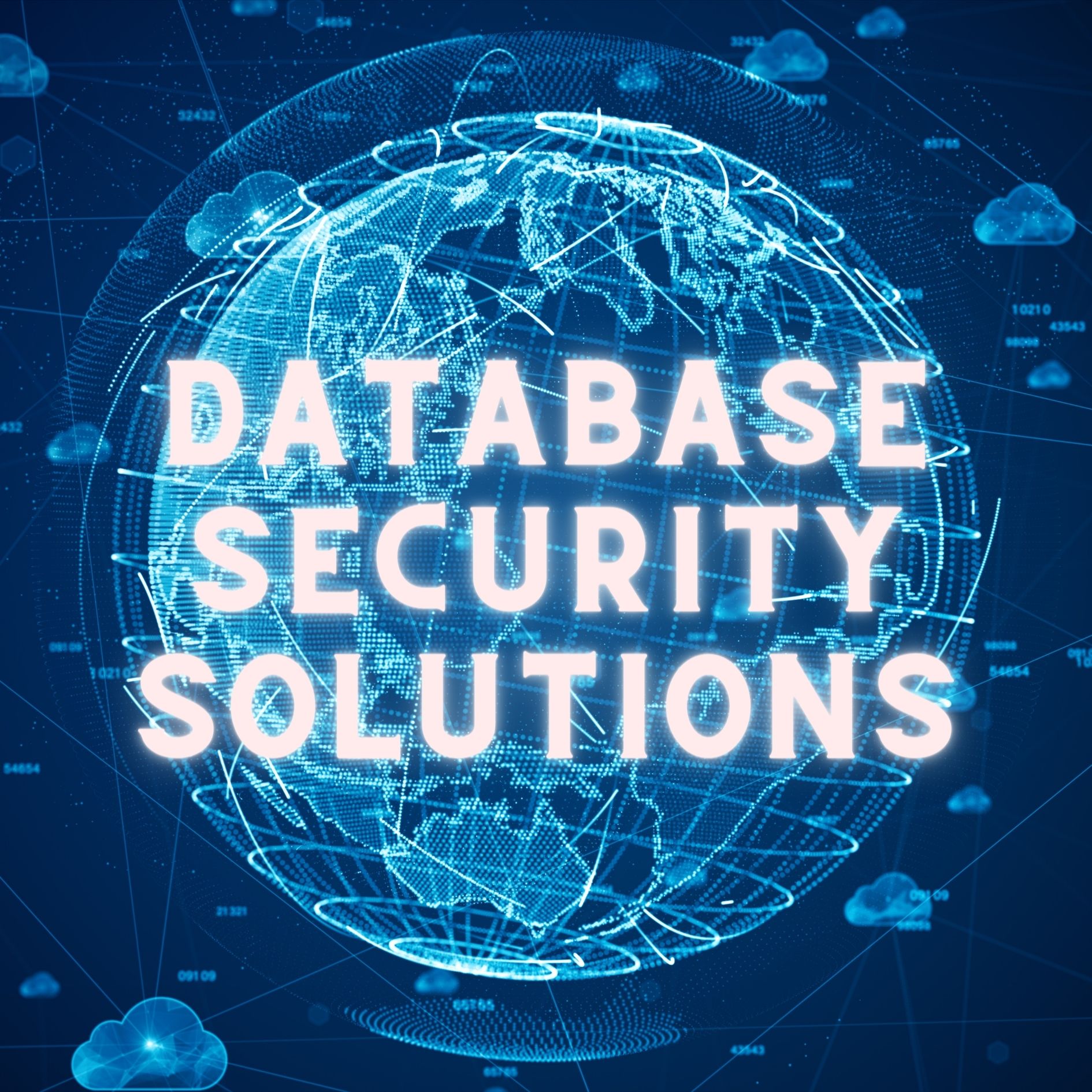In today’s digital age, businesses of all sizes heavily rely on their databases for critical information, including customer details, employee records, and financial data. However, with increasing cyber-attacks and sophisticated hacking techniques, organizations should proactively protect their databases from security breaches. This blog article will look at the importance of top-tier database security solutions and explore ways to mitigate potential risks and safeguard your business’s interests.
Introduction:
What is database security?
Database security safeguards your business’s data and helps maintain its integrity by preventing unauthorized data access, modification, or deletion. Database security involves implementing various security measures, such as access control, encryption, monitoring, and auditing of database activities.
Risks of data breaches
Data breaches can result in long-term damage to your business, including the loss of customer trust, financial loss, and legal ramifications. Hackers can steal your vital business data, misuse it, or sell it on the dark web, leading to potential identity theft and fraudulent activities. Therefore, it is crucial to recognize the potential risks and work proactively to safeguard your sensitive data.
How database security works
Database security typically involves two key elements: authentication and authorization. Authentication ensures that only authorized individuals can access specific data by providing unique login credentials, such as a username and password. Authorization controls what level of access each individual has to the data once access is granted.
Common types of database threats
Database security threats can come from external sources or internal personnel. External sources include cybercriminals, hackers, malware, and phishing attacks, while internal sources include disgruntled employees, contractors, and vendors. Threats could manifest in numerous ways, such as SQL injection attacks, distributed denial-of-service (DDoS) attacks, and file tampering. Proactively identifying these threats and having a solid security strategy will help mitigate cybersecurity risks for your business.
Analyzing Cybersecurity Regulations and Compliance Standards:
Overview of cybersecurity regulations
Regulatory compliance requirements aim to protect customers’ personal information and ensure that businesses follow best cybersecurity practices. These regulations and standards provide a basic framework for businesses to follow, including guidelines for security measures, risk management, incident response planning, and training.
Common compliance standards
Common regulatory compliance standards include the General Data Protection Regulation (GDPR), Payment Card Industry (PCI) Data Security Standard, Federal Risk and Authorization Program (FedRAMP), and Health Insurance Portability and Accountability Act (HIPAA).
Why complying with regulations is crucial for businesses
Compliance with regulations and standards provides a minimum standard for cybersecurity and helps build a trusting relationship with customers and partners. Compliance is also necessary to avoid hefty non-compliance fines and legal implications.
Identifying the Elements of a Top-tier Database Security Solution:
Key features of an effective security solution
An effective database security solution should have multiple layers of security to detect and stop unauthorized access to the system. It should also provide measures to protect against threats, check for vulnerabilities, and audit database activity. Additionally, it should have a robust monitoring and reporting system to keep track of threats and incident responses.
How to evaluate database security solutions
Evaluating database security solutions should include analyzing their functionalities, features, and pricing models. Careful evaluation will help identify the most suitable solution for your database security requirements. Also, asking potential vendors for references from existing customers can help give an idea of the solution’s reliability.
How to choose the best database security solution for your business
Choosing the best database security solution for your business will depend on the company’s specific needs and budget. It is essential to find a solution that meets your current requirements and scales with your database systems’ growth. It is also crucial to ensure that the solution provider stays up-to-date with the latest cyber threats and has a robust support system.
Implementing Database Security Strategies:
Creating a security culture in the organization
Creating a security culture in your organization requires the participation of every employee. All team members should know the potential risks and take proactive measures to safeguard their data and systems. Training employees to recognize threats and keeping security at the forefront of company culture encourages employees to take ownership of the security of their data, thereby minimizing the risk of security breaches.
Managing privileged user access
Privileged user access should be minimized to prevent the misuse of sensitive data. Only users who require access to specific resources should be granted access, and the access should be validated and audited regularly. Granting administrator-level permissions to users increases the vulnerability of your system to cyber-attacks or internal mistakes.
Taking inventory of sensitive data
Taking inventory of sensitive data involves identifying and cataloging all critical data assets in the organization, including intellectual property, customer, financial, and partner data. Once identified, the company can implement measures to restrict access to sensitive data and secure privileged access.
Securing data backups
Securing data backups involves encrypting all stored backup data and regularly testing and validating the encryption process. Regularly scheduled backups should be taken, and the backups should be stored in a secured off-site location, separate from the company’s primary location.
Database Security Challenges & Solutions:
Challenges with securing databases
The primary challenge with securing databases is managing the constantly evolving nature of cybersecurity threats. Additionally, many companies face budget constraints and lack the specialized expertise required to implement an effective data security program. As cyber threats evolve, companies must treat security updates as ongoing rather than a single end goal.
Common database security solutions
Standard database security solutions include data encryption, access control, firewalls, intrusion detection systems, and antivirus software. Additionally, multi-factor authentication adds a layer of security by validating the user’s identity in two or more ways.
Emerging database security trends
Emerging database security trends include the integration of Artificial Intelligence (AI) and machine learning algorithms for effective identification and mitigation of threats. Mobile device management software can also provide additional security measures by isolating mobile devices from sensitive company data and controlling access to the company’s data.
Maintaining and Updating Database Security:
The importance of regular database security updates
Regular database security updates are crucial to mitigate potential risks that could leave your business susceptible to security breaches. Security patches and updates should be tested and validated before being applied.
Best practices for maintaining database security
Best practices for maintaining database security include:
1. Conduct regular security audits.
2. Ensuring data updates.
3. Monitoring user activity logs.
4. Testing data recovery processes.
Regularly reviewing and updating cybersecurity policies can also help keep systems and teams up-to-date on emerging threats and prevention strategies.
Addressing Database Security Concerns in the Cloud:
Risks of database security in the Cloud
Cloud databases have become famous for businesses looking for a more cost-effective solution. However, cloud databases have many potential security risks, including access control, data deletion, and data leakage.
Cloud database security solutions
Cloud database security solutions include access and identity management controls, virtual private cloud architecture, continuous monitoring, and threat detection.
Best Practices for securing data in the Cloud
Best practices for securing data in the Cloud include:
1. Regularly conducting security audits.
2. Encrypting all sensitive data.
3. Using multi-factor authentication.
4. Limiting user permissions.
5. Maintaining backup data in a separate secure location.
Database Security and Mobile Devices:
Benefits of mobile access to databases
Mobile access to databases allows employees easy access to company data, improving work collaboration and productivity.
Risks associated with mobile database access
Risks associated with mobile database access include data breaches and misuse. Additionally, physical theft or loss of mobile devices can lead to a breach of sensitive company information.
How to secure mobile database access
Securing mobile database access includes providing unique login credentials and limiting access to privileged users. Mobile devices should have management policies that allow for device tracking and data wiping in case of theft or loss of devices.
Detecting and Mitigating Database Security Incidents:
How to detect a database security breach
Detecting a database security breach involves continuously monitoring database activity logs and conducting regular security audits to identify unusual behavior or patterns. Regular reviews and audits of users’ access history and login activity can help identify significant threats.
Steps to take after identifying a database security incident
After identifying database security incidents, steps include containing, assessing, and responding to the level of risk from the security breach. This security includes updating security policies, notifying stakeholders, and investigating the incident’s causes.
Employee Training and Awareness:
Importance of database security awareness training
Employee training and awareness of database security are crucial to maintaining a strong security culture within the organization. All employees that use data systems should understand the proper protocols for securely accessing company data.
Best practices for training employees on database security
Best practices for training employees include regular cybersecurity training sessions that encourage employees to know the latest cybersecurity trends and threats. The training should include different ways to handle sensitive data and avoid common pitfalls like phishing scams or sharing login credentials.
Database Security Audit and Assessment:
What is a security audit?
A security audit is an internal or external review process that evaluates the effectiveness of a company’s database security policies and protocols to ensure compliance with industry standards and regulations.
Best practices for conducting security audits
Best practices for conducting security audits include ensuring the audit includes:
1. Firstly, identifying data access controls.
2. Secondly, assessing the vulnerability management process.
3. Thirdly, verifying the incident response capabilities.
Audits should be conducted regularly and include a review of critical systems and applications.
Benefits of regular security assessments
Regular security assessments help maintain a continuously improving security posture within the organization. They help identify vulnerabilities and risks before cybercriminals utilize them, ultimately protecting the company from cyber threats.
Key Performance Indicators and Metrics in Database Security:
The importance of metrics in database security
Metrics in database security provide a reliable way to measure and track the effectiveness of security measures over time. Some crucial metrics used in database security include detecting high-risk security events and measuring response time to security incidents.
Standard metrics in database security
Standard metrics in database security include:
1. Measuring the number of security incidents.
2. Tracking access to critical systems.
3. Reviewing the effectiveness of system backups and recovery times.
Best practices for monitoring database security
1. Firstly, best practices for monitoring database security include:
2. Secondly, regularly monitoring and testing backups.
3. Thirdly, setting up real-time alerts on unusual system activities.
4. Finally, continuously monitoring access logs.
Conclusion:
Database security is critical to your business’s success, especially with the ever-increasing number of cyber threats and sophisticated hacking techniques. An effective top-tier database security solution mitigates potential risks, safeguards sensitive data, and enables companies to maintain a strong security posture besides, cybersecurity threats evolve, investing in a robust database security program is critical to protecting your business against cyber threats, meeting regulatory compliance standards, and building customer trust. Emerging technologies, such as AI, machine learning, and mobile device management, will continue to play a vital role in securing your data against potential threats. Moreover, by creating a security culture within your organization, effectively choosing your database security solution, and continuously testing and maintaining your defences, you can build a strong defence against potential data breaches and cyber-attacks and secure your business’s future.
Visit our website to know more!
Follow us on LinkedIn:


